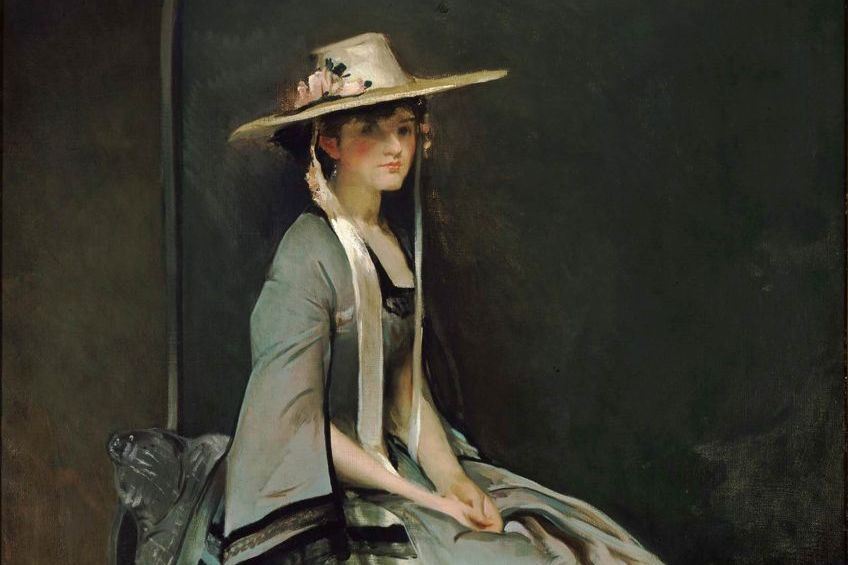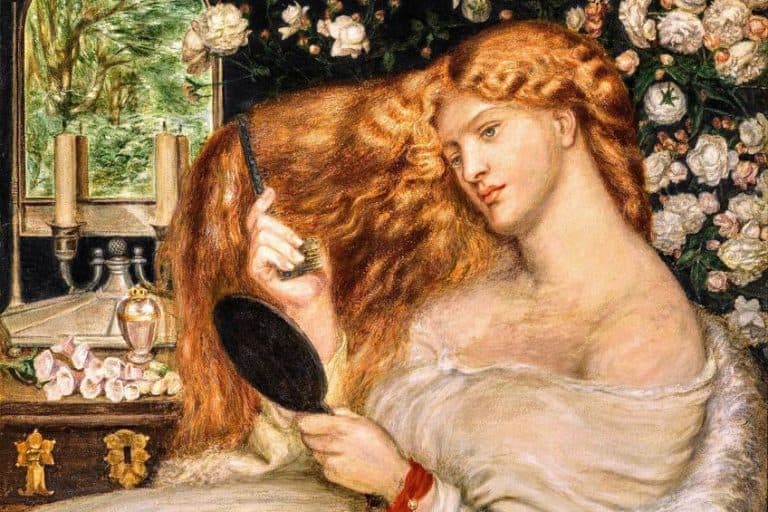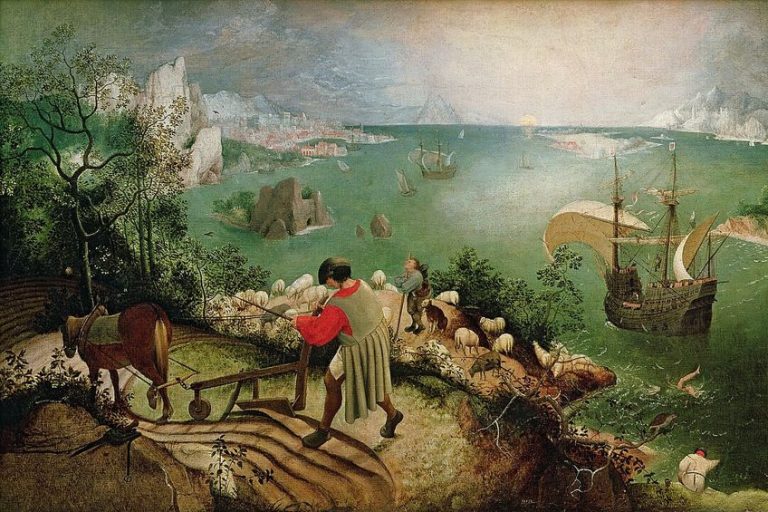Blank Verse Poems – Characteristics and Famous Examples
It’s easy to confuse some types of poems with other types of poems. This just happens. A major part of literature in general is that there are too many varieties out there! One such variety is the blank verse poem. Throughout this article, we are going to look at a definition of blank verse poetry alongside a list of ten different blank verse poems. It’s best to learn these things by directly engaging with examples of the form, and so, if you’d like to check out a few blank verse examples, you’ve clicked on the right article. We’ll dive straight in if you’re interested in doing the same!
Table of Contents
- 1 Blank Verse Poems
- 2 The List of Blank Verse Poems
- 2.1 The Tragedie of Gorboduc (1561) by Thomas Norton and Thomas Sackville
- 2.2 To be, or not to be (Between 1599 and 1601) by William Shakespeare
- 2.3 Paradise Lost (1667) by John Milton
- 2.4 Frost at Midnight (1798) by Samuel Taylor Coleridge
- 2.5 Hyperion (1820) by John Keats
- 2.6 Ulysses (1842) by Alfred, Lord Tennyson
- 2.7 Aurora Leigh (1856) by Elizabeth Barrett Browning
- 2.8 Mending Wall (1914) by Robert Frost
- 2.9 The Second Coming (1919) by W. B. Yeats
- 2.10 The Idea of Order at Key West (1934) by Wallace Stevens
- 3 Frequently Asked Questions
Blank Verse Poems
While blank verse poetry is actually a rather common form of poetry, it is not quite as famous as the similarly named free verse variety of poetry. These two forms are not actually connected to one another anymore than any other poetic format is connected to any other, but the names can be confusing when trying to understand one over the other, and it can be beneficial to use free verse poetry to help us to understand blank verse poems.
So, what makes these two distinct from each other? Well, free verse poetry is a variety of poetry that is characterized by its general lack of rules. Many instances of free verse poetry do follow their own kind of rules, but they are not bound by the usual constraints of more formal poetry. This means that they usually lack a firm metrical structure or rhyme scheme. Blank verse, on the other hand, is characterized by its lack of a rhyme scheme. This makes it feel kind of similar to free verse, but blank verse examples still adhere to a metrical structure.

This means that a blank verse poem will be one that uses a standard meter of some kind. For instance, it will make use of iambic pentameter, which is the most common form of meter in the English language. For those who are unfamiliar with this concept, it refers to a kind of stricture in which there are pairs of unstressed and stressed syllables in a poem’s structure. These pairs are arranged in sets of five for a total of ten syllables in each line. So, we can see that blank verse poems have more of a defined structure than free verse poems, but this is the only structure that they possess. Basically, they have no rhyme or set arrangement of stanzas outside of this.
The connections between free verse and blank verse poems are, therefore, not all that different from one another. They both have fewer rules than many other varieties of poetry, but they differentiate themselves through blank verse examples being just a little more formalized than free verse poems.
And these will be the kinds of poems that we’ll be showing you today.
The List of Blank Verse Poems
It can still be confusing to note when something is free verse or blank verse, but, as I used to remind my students, the term “free” implies that it is free of rules. Something being “blank” on the other hand is a little bit more nebulous, but if you can remember it as related to free verse, then it can be easier to differentiate. However, it would be best to learn and develop our understanding of blank verse poems by actually engaging with some of them. So, let’s engage with them below and peruse a number of the best-known instances of blank verse poetry.

The Tragedie of Gorboduc (1561) by Thomas Norton and Thomas Sackville
| Date Published | 1561 |
| Type of Poem | Verse play |
| Rhyme Scheme | None |
| Meter | Iambic pentameter |
| Topic | The story of King Gorboduc |
The Tragedie of Gorboduc is a verse play. This means that it is a play that is written in verse rather than a more realistic style of writing. This makes it similar to something like the plays of William Shakespeare. In this case, the play is written in iambic pentameter throughout, and it tells the story of King Gorboduc, who was a king of ancient Briton. He separated his kingdom into different sections, and this would lead to his death.
The play is one phenomenal example of a longer text that makes use of blank verse.

To be, or not to be (Between 1599 and 1601) by William Shakespeare
| Date Published | Between 1599 and 1601 |
| Type of Poem | Soliloquy |
| Rhyme Scheme | None |
| Meter | Iambic pentameter |
| Topic | Life and death |
To be, or not to be is, strictly speaking, not a poem at all. It is actually a soliloquy from Hamlet. However, it has become the most famous and oft-quoted of all the lines in Shakespeare’s work. The soliloquy, which is written in blank verse, contemplates thoughts of life, death, suicide, pain, and various other aspects of the human condition.
It has become one of the most famous soliloquies ever written, and it has resonated with many over the centuries.
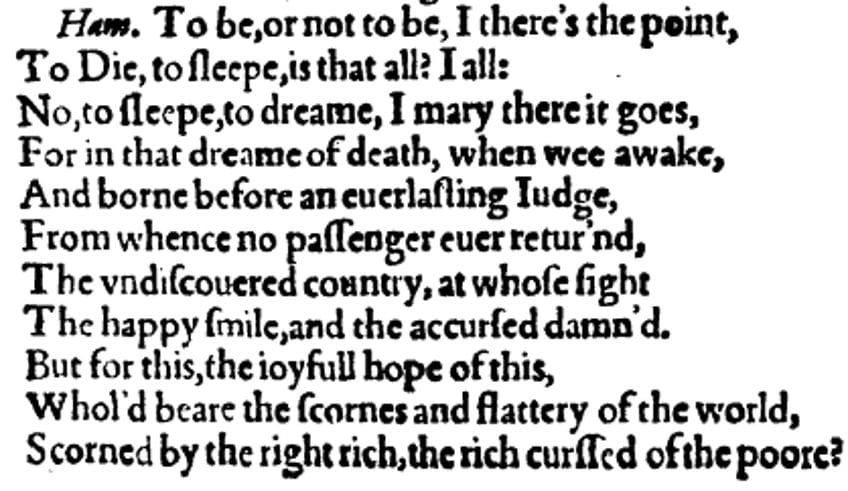
Paradise Lost (1667) by John Milton
| Date Published | 1667 |
| Type of Poem | Blank verse |
| Rhyme Scheme | None |
| Meter | Iambic pentameter |
| Topic | The Fall of Man |
Paradise Lost is probably the most famous poem in the English language that was written entirely in blank verse. In this epic poem, the story of the Fall of Man from the Christian Bible is recounted, as well as the fall of Lucifer and the other angels into hell. This has become one of the best-known blank verse poems as well as being one of the most famous Christian poems.
Few texts have managed to attain the same level of influence that Paradise Lost has managed to attain over the centuries since it was written.
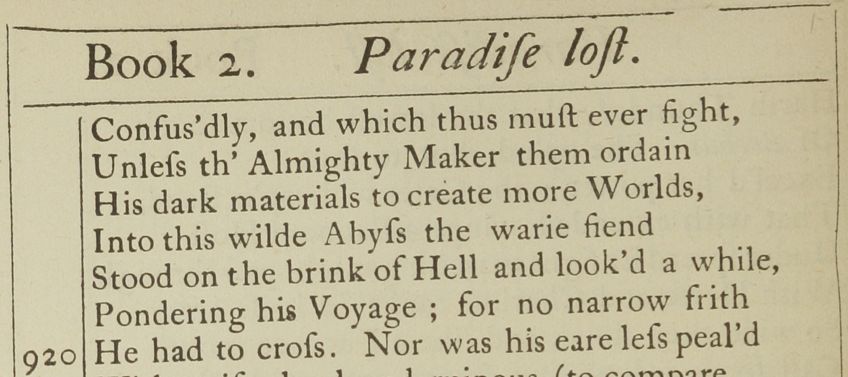
Frost at Midnight (1798) by Samuel Taylor Coleridge
| Date Published | 1798 |
| Type of Poem | Blank verse |
| Rhyme Scheme | None |
| Meter | Iambic pentameter |
| Topic | Childhood experiences |
Frost at Midnight is one of Coleridge’s so-called conversation poems. This was a series of poems that detailed some kind of a life experience. In this case, the poem explored the negatives of his upbringing and the desire for his own child to be raised in the countryside. There are many Christian overtones to the work as Coleridge’s work would often see the natural world as a means of being closer to God.
This has come to be seen as one of the best-known blank verse poems from the Romantic era.

Hyperion (1820) by John Keats
| Date Published | 1820 |
| Type of Poem | Blank verse |
| Rhyme Scheme | None |
| Meter | Iambic pentameter |
| Topic | The Titanomachy |
Hyperion is an incomplete poem. This is one of the best-known things about it. It tells the tale of the legendary event from ancient Greek myth, the Titanomachy, which entailed the series of battles between the Titans and the Olympians which ultimately concluded with Zeus becoming the ruler of the gods. The poem is a lengthy epic, but Keats never completed it. He would return to these ideas in a later poem, but he never actually finished this particular one.
It ends very abruptly, but regardless of that fact, it has become one of the most lauded Romantic poems.

Ulysses (1842) by Alfred, Lord Tennyson
| Date Published | 1842 |
| Type of Poem | Blank verse |
| Rhyme Scheme | None |
| Meter | Iambic pentameter |
| Topic | The story of Ulysses |
Ulysses is one of many poems that focuses on the tale of Ulysses, also known as Odysseus. This figure is an ancient mythological and literary figure who is perhaps best known for being the principal character in the Odyssey by Homer. In this particular blank verse poem, the character of Ulysses has concluded his great adventures which were recorded in ancient texts, and he has been reunited with his wife, but he still desires that sense of adventure that has become absent in his old age.
It is a tale of aging through the lens of a figure who has remained forever young in his most famous depictions.

Aurora Leigh (1856) by Elizabeth Barrett Browning
| Date Published | 1856 |
| Type of Poem | Blank verse |
| Rhyme Scheme | None |
| Meter | Iambic pentameter |
| Topic | The tale of Aurora and Marian Erie |
Aurora Leigh is an epic poem written in blank verse. The poem is a particularly lengthy one and is made up of several books that relate this narrative to the reader. The story is the tale of Aurora and Marian Erie as they travel throughout Europe. The style changes throughout the poem and it has come to be seen as one of the greatest epic poems of the Victorian era.
The long narrative was even expressed by the author as being a “novel in verse”, which makes it a particularly interesting instance of blank verse poetry.

Mending Wall (1914) by Robert Frost
| Date Published | 1914 |
| Type of Poem | Blank verse |
| Rhyme Scheme | None |
| Meter | Iambic pentameter |
| Topic | The nature of human relationships |
Mending Wall is one of the most famous of all the poems that Robert Frost ever produced. This is also one of the best 20th century blank verse examples. The poem uses this blank verse style to present an exploration of the relationships that develop between human beings and, more precisely, between neighbors. In this case, it involves the yearly meetup of two neighbors who only come together to help rebuild the stone wall that separates them. This ritual of separation ironically brings them together.
This irony and the stunning portrayal of this relationship have contributed to the poem being one of Robert Frost’s most anthologized poems.
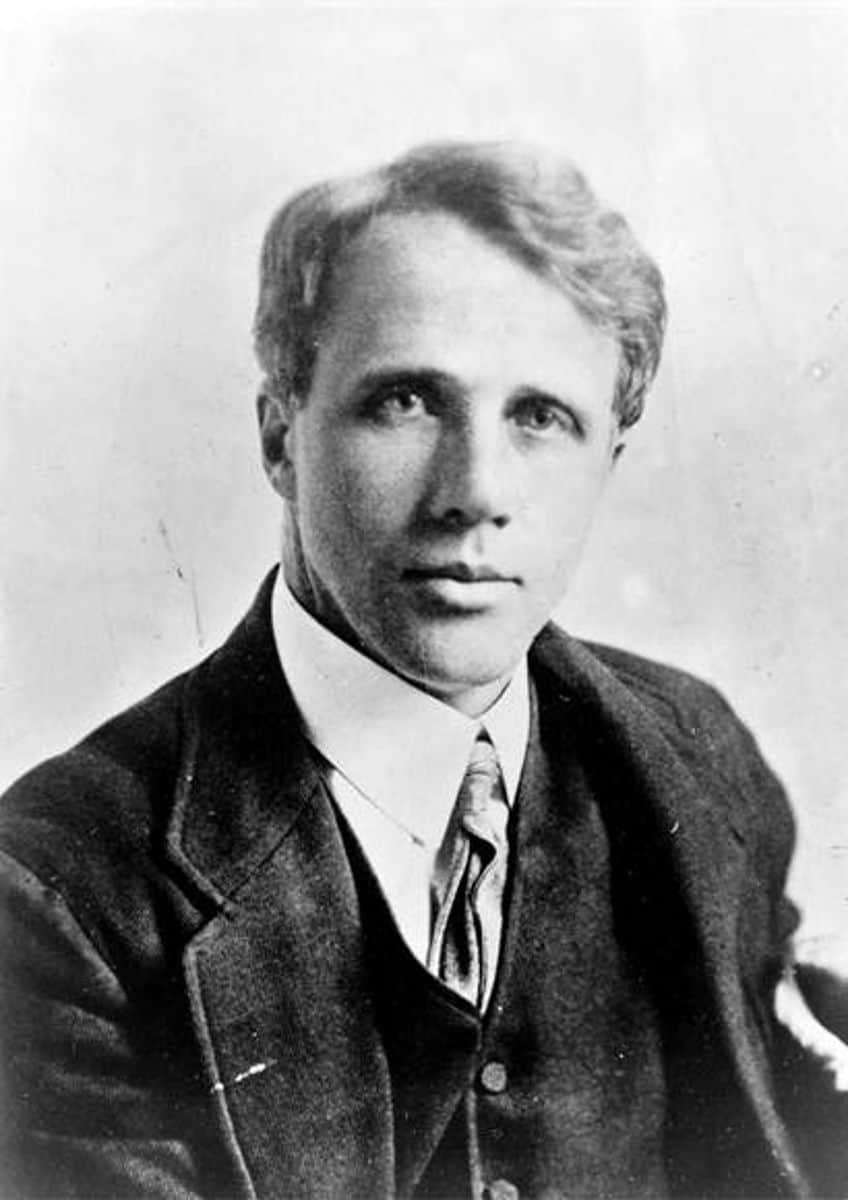
The Second Coming (1919) by W. B. Yeats
| Date Published | 1919 |
| Type of Poem | Blank verse |
| Rhyme Scheme | None |
| Meter | Loose iambic pentameter |
| Topic | The Second Coming of Jesus Christ |
The Second Coming is a poem that makes use of the imagery of the biblical narrative of the Second Coming of Jesus Christ from Revelation but uses it to instead present the reader with a horrifying image. Rather than the supposed salvation that comes with the Second Coming, the poem presents it as the arrival of monsters and the utter collapse of society.
The parallels between this apocalyptic vision and the recent end of the First World War, when this poem was written, should indicate where these kinds of feelings originated.
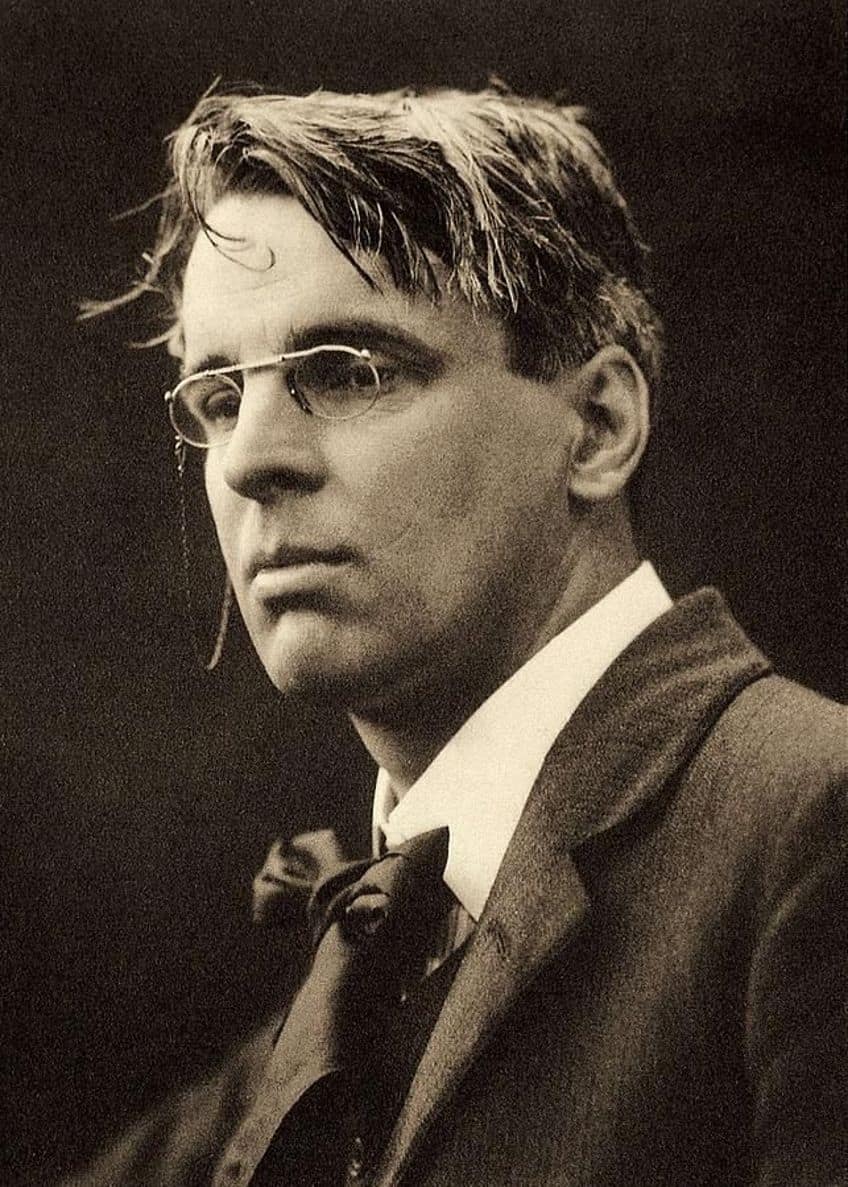
The Idea of Order at Key West (1934) by Wallace Stevens
| Date Published | 1934 |
| Type of Poem | Blank verse |
| Rhyme Scheme | None |
| Meter | Iambic pentameter |
| Topic | Art, imagination, and the natural world |
The Idea of Order at Key West is a phenomenal example of blank verse poetry. In this case, the poem explores ideas that relate to the imagination of the artist as well as the natural world around us. It is set in Florida and, like many of the blank verse poems in this list, it is composed in iambic pentameter. The poem makes use of images that relate to the natural world, such as the summer sun above and the sea that flows beside the speaker.

That has been our tenth, and final, entry in this list of blank verse poems. The list is, as all lists are doomed to be, woefully incomplete! The tradition of blank verse poetry has existed for a very long time, and expecting a full account of every instance is a fool’s errand. Luckily, fools can still learn a lot by having a look at shorter lists! Hopefully, this ten-point list of blank verse examples has aided you in understanding what exactly blank verse poetry is in the first place, and they are all worth a read if you like this sort of poetry! Always try and remember that there will be so many other blank verse poems out there if you’d like to find some more out in the wild. So, happy hunting if that’s what you plan on doing!
Frequently Asked Questions
What Is a Blank Verse Poem?
In very basic terms, the blank verse poem is one that adopts a lack of rhyme while still making use of a particular and formalized metrical structure. So, this means that blank verse poems will have a metrical structure like iambic pentameter, but there will be no definitive rhyme, stanzas, and so on.
How Does Blank Verse Differ from Free Verse?
These two varieties of poetry are both similar and not similar to one another. Free verse poetry, famously, has no real rules. Blank verse poetry, on the other hand, has fewer rules than other types of formalized poetry, such as a lack of rhyme and definitive layouts, but it does still maintain a consistent sense of meter.
What Are the Primary Characteristics of Blank Verse Poems?
The main thing to remember about this particular form of poetry is that it still uses a consistent metrical structure. Other than that, it has no real rules. It does not need to have a specific number of lines or stanzas, nor does it need to follow a particular structure or have a rhyme scheme.
Justin van Huyssteen is a freelance writer, novelist, and academic originally from Cape Town, South Africa. At present, he has a bachelor’s degree in English and literary theory and an honor’s degree in literary theory. He is currently working towards his master’s degree in literary theory with a focus on animal studies, critical theory, and semiotics within literature. As a novelist and freelancer, he often writes under the pen name L.C. Lupus.
Justin’s preferred literary movements include modern and postmodern literature with literary fiction and genre fiction like sci-fi, post-apocalyptic, and horror being of particular interest. His academia extends to his interest in prose and narratology. He enjoys analyzing a variety of mediums through a literary lens, such as graphic novels, film, and video games.
Justin is working for artincontext.org as an author and content writer since 2022. He is responsible for all blog posts about architecture, literature and poetry.
Learn more about Justin van Huyssteen and the Art in Context Team.
Cite this Article
Justin, van Huyssteen, “Blank Verse Poems – Characteristics and Famous Examples.” Art in Context. January 18, 2024. URL: https://artincontext.org/blank-verse-poems/
van Huyssteen, J. (2024, 18 January). Blank Verse Poems – Characteristics and Famous Examples. Art in Context. https://artincontext.org/blank-verse-poems/
van Huyssteen, Justin. “Blank Verse Poems – Characteristics and Famous Examples.” Art in Context, January 18, 2024. https://artincontext.org/blank-verse-poems/.


